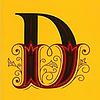Take a photo of a barcode or cover
emotional
informative
inspiring
reflective
medium-paced
Path Lit by Lightning is the story of Jim Thorpe written by renowned historian and biographer David Maraniss. This is a very thoroughly researched and detailed biography. Jim Thorpe has achieved an almost mythical status in American sports history. He won the pentathlon and decathlon gold medals at the 1912 Olympics, only to have the medals taken away when it was discovered he had played two seasons of minor league baseball. Despite this setback much of Jim Thorpe’s career was spent in professional sports. He helped to create the National Football League and was in the inaugural class of the Pro Football Hall of Fame. He also played major league baseball for the New York Giants and barnstormed basketball with an all-Indian team.
As the author points out much of what is known about Jim Thorpe is the myth, rather than the reality. This is an important book that demythologizes, as much as possible, the Jim Thorpe story. Born into the Sac and Fox Indian tribe, the author shows how much of Jim Thorpe’s life mirrors the larger story of Indian and American life in the 20th century. Born in 1887 at the time when the last of the tribes were being located west of the Mississippi River, Thorpe was named Wa-Tho-Huk which translates as “Bright Path” or the more poetic interpretation that Maraniss claims since Thorpe was born during a lightning storm, “Path Lit by Lightning.”
What this book really highlights well is the fact that Jim Thorpe’s life was divided between the Indian world and the white world. He was as true as he could be to his Indian ancestry while trying to make a living for himself and his family in a white man’s world. He also forged paths in professional sports, a career completely new to Indians or whites. Later in life, after his sports career faded away, Thorpe took up acting bit parts in movies and became an early advocate of Indian roles played by Indian actors.
It's hard to know if a white man writing an Indian story is appropriate or not. David Maraniss does try to frame the story from the Indian view as well as the white view. I think the narrative leans more white than Indian, but that might be due to a lack of material from the Indian point of view. Of course, that lack is most likely caused by white people’s inattention and casual racism throughout Jim Thorpe’s life. Also, Thorpe knew that his popularity depended in many ways on the white person’s approbation. Even his autobiography may be framed for a white audience, rather than written from an Indian point of view. It’s difficult to tease out one view from the other and the only thing we know for certain is that Jim Thorpe was never in control of the narrative.
This book is very well worth reading simply as a biography of one of the most popular athletes of all time. It is also worth reading as a history of American Indian life in the early 20th century. I think even if you think you know Jim Thorpe and early American Indian history, you will learn something from this book.
I’m very glad to have had the chance to read this book from #SimonandSchuster. I believe notice that this book was available to read came in a promotional email from #NetGalley. I don’t think I went looking for it, but I’m very glad I found it!

